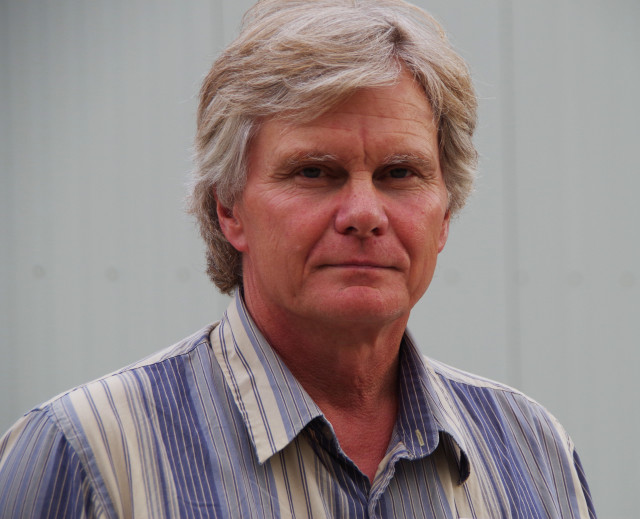I had the pleasure of interviewing John Wittmayer, the kootenay regional film commissioner. John has had an extensive career in the industry, first setting foot on a film set in 1985. He has experience working in many different areas of film, from stunt work to location managing. John also started The Ridge film studio which has hosted countless projects since its inception in 2015. Today, John is working to bring more of British Columbia’s filmmakers to Nelson while also working towards a greener, more sustainable industry.
Interview by Jack Steer.
1. Can you give a quick summary of your extensive experience in film? How did you get started in the industry?
I started out in 1985. I first worked as an extra on a film set. I got bit by the bug. It felt like I just joined the circus. It was nomadic, really fun, and eventually it paid very well. Then I was hired on a film doing stunt work and stunt doubling. That turned into working as a production assistant on films. And that turned into working as an Assistant Location Manager, and ultimately as a Location Manager for many, many years. I became a member of the Directors Guild of Canada and there was no looking back.
2. Can you tell us more about The Ridge Film Studio? List some projects the studio has hosted.
I started the Ridge Studio in 2015. There are way too many movies to name! There’s been sixty movies filmed in the studio.
3. Can you tell us more about what your job as the Film Commissioner for the Kootenays entails? What have you been working on since you first took the position?
My job is to market the Kootenay Region to filmmakers and get them to bring their projects here.
I have sent over 20 location photo packages to producers since I started, and have replied to numerous phone calls and emails regarding filming in the Kootenays. We’ve come close to landing a few movies here, and more are in the pipeline. At the moment we are building infrastructure for filming here, adding location photos to the Creative BC library, as well as building a film crew and vendor list. We are getting ready to launch our website soon.
4. What is the importance of supporting local filmmakers and developing the film industry in the Kootenays?
There is almost 3.8 billion dollars being spent in British Columbia for the film industry. Almost none of that money is spent in the Kootenay Region, which is unacceptable. It is all concentrated in Metro Vancouver, Lower Mainland, Vancouver Island, and the Okanagan.
The Kootenays deserve some of that production money, and along with it, deserves more opportunities for training and job placement in the film industry. Film is a wonderful, creative, and exciting industry to be involved in.
5. What is the importance of supporting indigenous, BIPOC, youth and other minority filmmakers?
The Kootenay Regional Film Commission is committed to help create opportunities in film for all under-represented groups. There are so many stories to tell, and we need to do our part to make sure that happens without obstructions.
6. You have climbed many mountains, and have made many expeditions to explore what nature has to offer. Describe how your love of nature has influenced your life and your work.
I love Nature and the outdoors. I am an environmentalist and conservationist. It has informed my personal life, values, and lifestyle in many ways.
7. What are the ways in which you are trying to make our local film industry more sustainable and environmentally friendly? Tell us more about Creative BC’s Reel Green Climate and Sustainable Production Training program.
One of the many ways to help create a sustainable film industry is to stop relying on diesel generators on set. These generators run for 14 to 16 hours per day and consume an obscene amount of diesel fuel. They are noisy, dirty, and their carbon emissions are through the roof. There are electric generators that can do the same job and are beginning to be used by the more responsible film production companies. Another area to be addressed is catering and craft service. There is a trend to stop using plastic products altogether, and put more effort in recycling. Same with reducing paper products in the production office.

8. What are the things you’re looking for when scouting a film location? What makes our film region unique?
It all depends on what the script calls for, and if the story is location driven. We look for interesting, unique locations. Some locations actually become like another ‘character’ and can add a great visual storytelling to the film. Beside the obvious incredibly cinematic landscapes the Kootenay Region offers, the charming, quirky heritage looks of some of our communities are very cool. Directors will fall in love with them once the word gets out. The feedback so far has been very positive.
9. Out of the many film projects you have been involved with, which was your favorite to work on? Why?
There really hasn’t been a favorite. They have all offered their own particular charms. The Bletchley Circle was a very creative period show. American Mary was a well written, low budget horror show which was pretty interesting. Blackfly was a beautifully written and acted movie. When a Man Falls in the Forest was well crafted and acted.
10. Have you been involved with any productions shot locally?
I helped land the feature film The Tall Man here, as well as Christmas Miracle, and Magic in the Water.
11. What is your vision for the film industry in the Kootenays? What can people do to help realize this vision?
The Kootenay Region is poised to be the next part of the province to be discovered. We have amazing locations, experienced film crew, and film-related vendors. We have very film-friendly communities. The heritage value of our towns is significant. They are coming! People can support the film commission’s efforts by letting the world know who we are and what we have to offer. There is an enormous opportunity to post on social media sites, reach out to studios and producers. Make some noise folks!
12. In your extensive experience in the industry, what is one thing you’ve learned that has stuck with you?
You don’t know if you have the gig until you’re standing in the lunch line up on the first day of shooting! Seriously, treat everyone with respect, patience, and understanding. This means from the lowest paid, entry level position, to the director, actors, and producer. This extends from being on the film set to interacting with the people in our communities. Residents and merchants need to be treated well, and if they are, they will look forward to more filming. Filming will be embraced by Kootenay communities if they feel that film companies comport themselves with a professional attitude and treat them fairly, Film companies can’t run around with impunity thinking that what they do doesn’t impact the community. It does.


